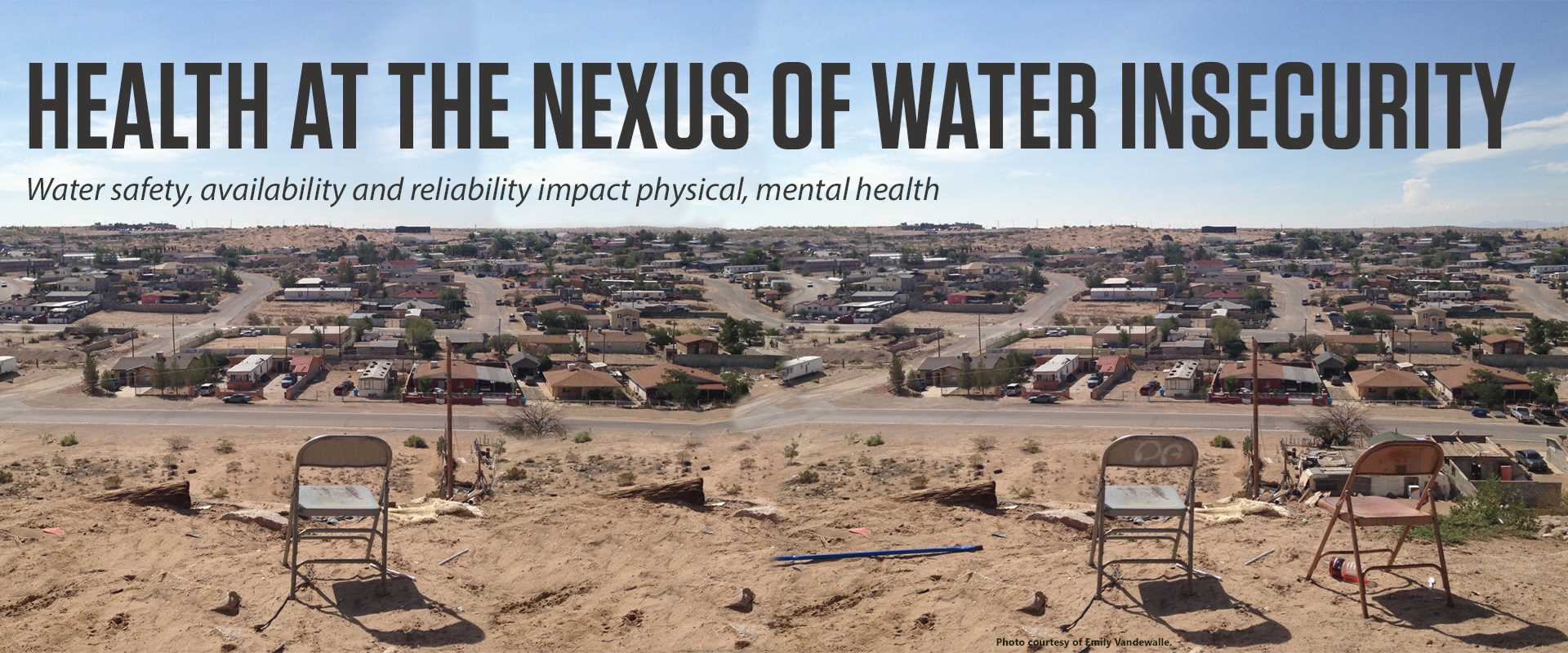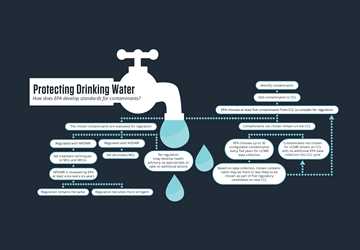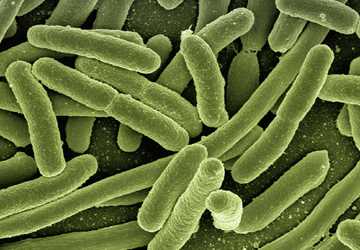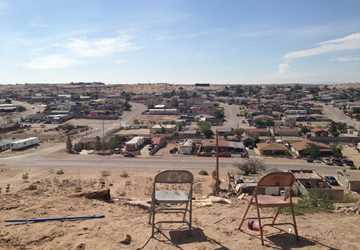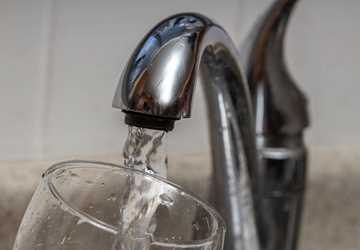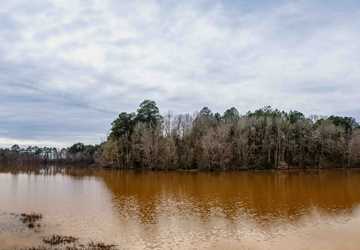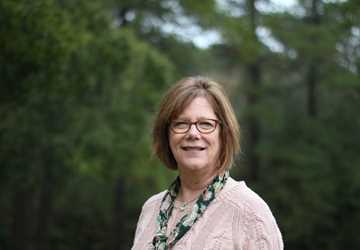Just outside of El Paso, families pay steep prices for trucked-in water to lug home in the Cochran colonia. Cochran is one of 2,300 Texas colonias, which are rural or peri-urban subdivisions along the U.S.-Mexico border that are home to an estimated half a million people. Colonias generally lack the support or resources to connect to nearby water mains. While the average American uses 88 gallons of potable water per day, Cochran colonia residents use a mere 50 to 100 gallons per month.
The colonias’ water insecurity was chronicled in a recent report, titled “Closing the Water Access Gap in the United States,” from two water-focused nonprofits, DigDeep and the U.S. Water Alliance. According to the report, more than two million people in the United States do not have running water and basic indoor plumbing. All of that water insecurity can have numerous far-reaching health consequences.
Defining water insecurity
People often don’t think of water insecurity being a problem in the United States, said Dr. Wendy Jepson, University Professor in Texas A&M University’s Department of Geography. As a result, the water insecurity that does exist can get swept under the rug, she said.
“It’s not to say that our entire water system has problems. When it works, it works well. But when it doesn’t work — yikes,” Jepson said.
Water safety, availability and reliability impact physical, mental health
More Information
- New Water Insecurity Scale Provides Critical Data, College of Geosciences News
- Household Water Insecurity Experiences Scale (HWISE)
- Household Water Insecurity Experiences Research Coordination Network
- Closing the Water Access Gap in the United States
Want to get txH20 delivered right to your inbox? Click to subscribe.
This misunderstanding of U.S. water insecurity partly results from how people conceptualize water insecurity, said Dr. Garett Sansom, research assistant professor in the Department of Environmental and Occupational Health at the Texas A&M School of Public Health.
“If people think of water insecurity as turning on the faucet and having no water come out, then by that definition, we’re not very water insecure in the United States,” he said.
But the definition of water insecurity is actually much more complicated, Jepson said.
Jepson, who studies water governance, water security and environmental justice around the world, defines water security as being able to engage with and benefit from the “hydrosocial processes that support human development and well-being.” Being water secure, she said, means not only having water come out of the faucet but also having water that is safe, sufficient, affordable and reliable.
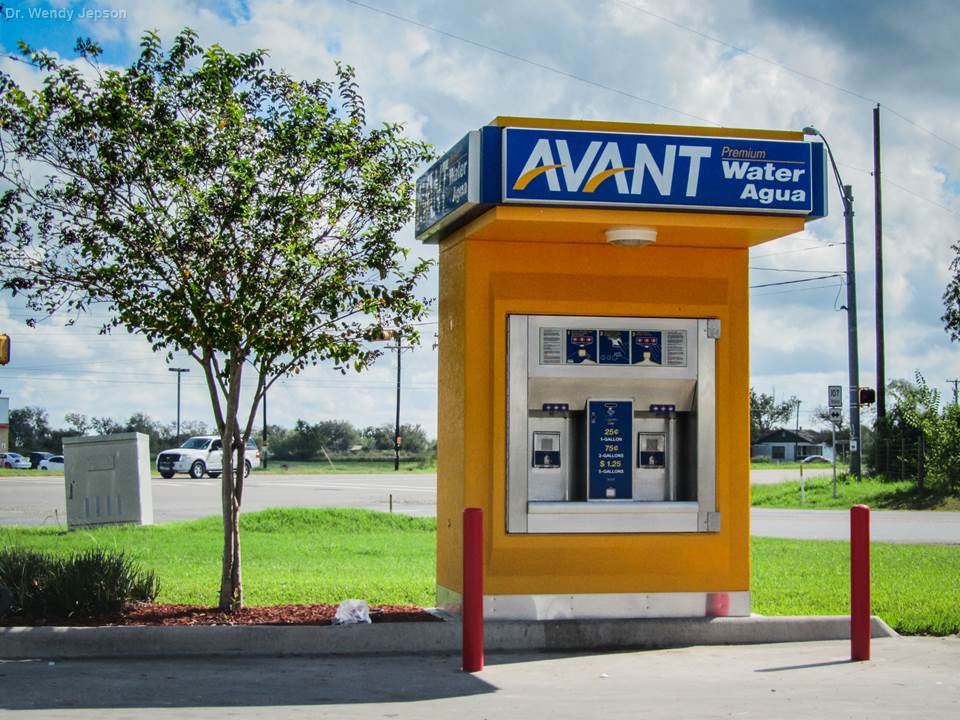
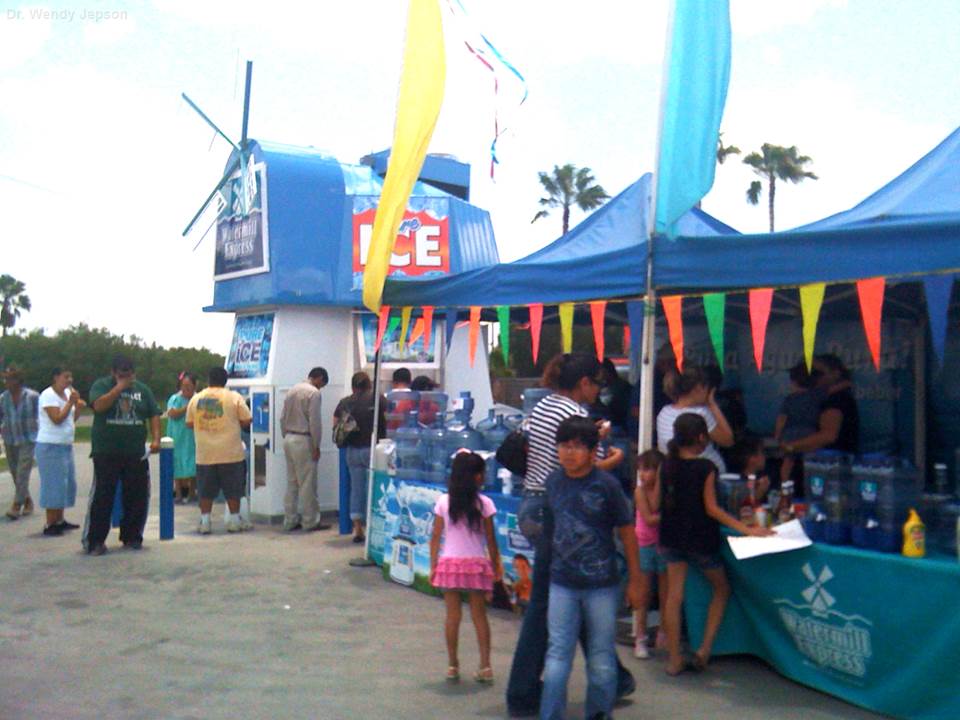
Water insecurity in Texas
With a more holistic definition of water insecurity, Sansom said, it is clear that Texas is at the nexus of water insecurity issues in the United States.
“We have evidence that there are pollutants in Texas water systems, including ‘forever chemicals’ linked to public health issues,” Sansom said. “There are issues with older infrastructure and a water purification process that can leach metals out of that older infrastructure. And Texas is at risk of not having enough water to meet the needs of the rising population in the future because of drought and climate change. Moving forward, it’s all just going to be more of an issue.”
According to the Texas Water Development Board’s most recent state water plan in 2017, Texas’ existing water sources that can be relied on in the event of another drought of record are expected to decrease by 11% between 2020 and 2070. Over that same time, Texas’ population is expected to increase by more than 70%.
Different parts of Texas face different water insecurity issues, and some communities are more heavily impacted than others. The “Closing the Water Access Gap in the United States” report found that in Texas, Latino people are most likely to lack complete plumbing, a measure used to estimate water insecurity.
In Texas’ colonias, where the majority of the population is Latino and makes less than half the U.S. median income level, water insecurity issues are a result of a lack of infrastructure and city services. Colonias are often in “donut holes” between other municipalities and utility districts and connecting to water systems can be prohibitively expensive. This results in colonia residents having to rely entirely on expensive trucked-in water and unmonitored private wells. Occasionally, residents will create makeshift water hookups, which can contaminate the source water, adding another layer of water insecurity.
The colonias, Jepson said, are far from alone in being water insecure in Texas.
Kelli Condina, a graduate student in the Texas A&M School of Public Health, studies water insecurity in the Greater Houston area. There, Condina found that the unusually large number of small, fragmented water systems contribute to water insecurity, and that having a low income level was the strongest predictor of being water insecure.
Small water systems are at a disadvantage compared to larger, consolidated water systems, Condina said, because they have fewer resources for improving infrastructure and hiring and keeping qualified staff. Sometimes, providing utilities may be the systems’ secondary business, such as with mobile home parks. Combined, these factors mean that water utilities may be less reliable and have higher violation levels, she said.
Water quality also comes into play in the Houston area, said Sansom, who is the Health and Environment Discovery lead at Texas A&M’s Institute for Sustainable Communities.
Sansom conducted a pilot study on lead levels in the low-income southeast Houston neighborhood of Manchester, along with the institute, Texas Environmental Justice Advocacy Services and a research team from the Texas A&M School of Public Health, College of Architecture and College of Geosciences. The team found that 30% of homes in the neighborhood had lead in their water. Though all the surveyed homes had lead levels below EPA’s actionable levels, the levels were still above the water standard goal of zero.
Jepson said these issues of water access, affordability, reliability and quality are repeated across Texas.
“Private wells, small systems and communities that are disadvantaged are at higher risk,” she said.
And the burden of water insecurity as well as exposure to environmental pollutants such as lead, Sansom said, tend to fall on those who are already the most vulnerable.
“Barriers to water security fall along similar lines as barriers to other resources,” Jepson said. “Wherever you have more precarious populations, there’s likely to be water insecurity.”
Barriers to water security fall along similar lines as barriers to other resources. Wherever you have more precarious populations, there’s likely to be water insecurity.
Dr. Wendy JepsonWhat water insecurity means for health
Whatever the cause, water insecurity can have a variety of health impacts. Having insufficient water can lead to dehydration and, eventually, to developmental issues. Drinking contaminated water can potentially lead to, among other things, gastrointestinal diseases and neurological impairments.
However, those conditions account for only some of water insecurity’s health impacts. Jepson and Sansom both said not having access to safe, reliable, affordable water can also negatively impact people’s mental health.
“If people’s water is unsafe or unreliable, they have this constant fear, this thing they’re thinking about all the time that they really shouldn’t have to think about,” Sansom said. “Over and over again I hear people saying they’re worried about their families.”
That constant stress can have long-term effects, Jepson said, such as high blood pressure, increased risk of cardiovascular disease and compromised immune function.
Water insecurity also leads people to adapt to their circumstances — and those adaptations can also have long-term health impacts.
“There are tradeoffs. When water is cut off, people may buy bottled water, because it’s cheaper in the short term than hooking up the water again,” Jepson said. “But over time, it’s the most expensive water you can buy, leaving less money for other health-related things.”
If water is too expensive or unreliable, people may buy more soda, she said, which can have long-term impacts on dental health and diabetes risk. People may also switch to eating foods that require less water to make, which “can have deleterious impacts on nutrition,” Jepson said.
All of these health impacts, she said, can feed back into each other.
“I wouldn’t want to separate mental health or other factors as stand-alone categories of health impacts,” Jepson said. “They’re all interconnected in complex ways. We need to identify what those pathways and connections are.”
Gathering more data
Identifying and studying the pathways of water insecurity in the United States can be difficult, Sansom said, because much of the past research has focused elsewhere.
“We’re only beginning to realize the scope of the issue here in the United States,” he said. “So there needs to be more research.”
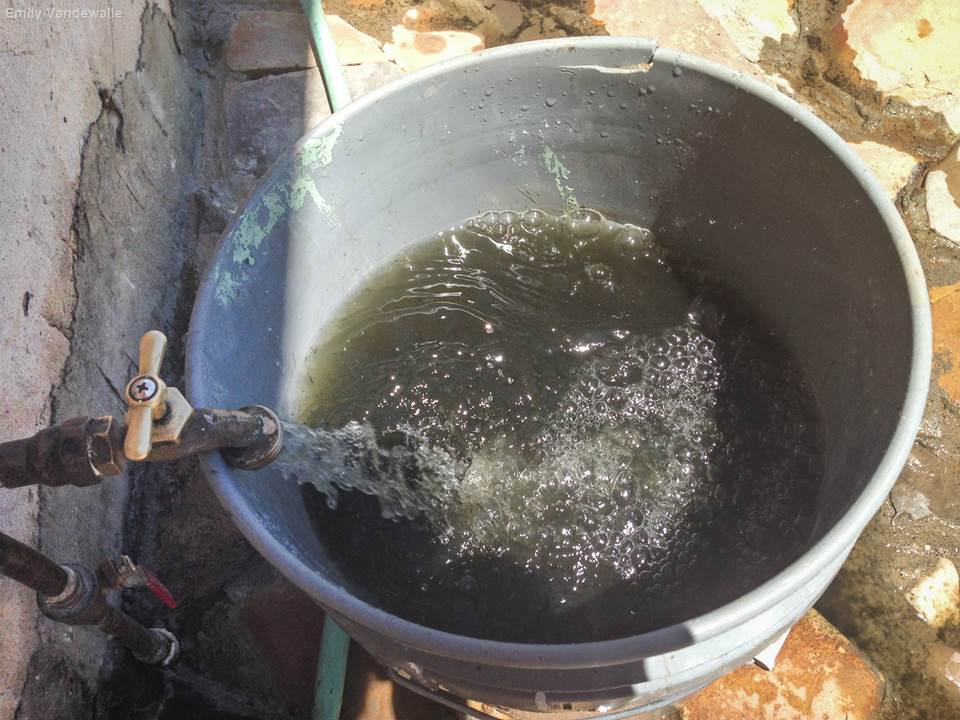
But, Jepson said, knowing where the data isn’t sufficient is also important. It demonstrates the need for new ways of thinking about and measuring water insecurity, she said.
In the past, measuring water insecurity has focused on water access. It has often been estimated using census measures such as median income level and complete plumbing, as in the “Closing the Water Access Gap in the United States” report.
Jepson said those measures don’t always provide an accurate or complete assessment of water insecurity. The report acknowledges this, stating that complete plumbing does not include whether that plumbing functions well or is reliable and affordable. The accuracy of both measures can also vary based on the assessment location, Condina said.
“If there’s a large income disparity in a community, then median income level isn’t going to be that helpful for finding water insecurity,” Condina said.
To better assess water insecurity across the world, Jepson and her colleagues developed a cross-cultural metric called the Household Water Insecurity Experiences (HWISE) Scale.
The HWISE Scale is based on 8,000 households-worth of data from 23 countries. At 12 questions long, it takes a mere three to five minutes to complete. Since its creation, the HWISE Scale has been adopted by organizations including the United Nations Educational, Scientific and Cultural Organization (UNESCO), United States Agency for International Development and the nonprofit group Oxfam International. By taking into account cultural and ecological differences between assessment locations, the HWISE Scale works in an equivalent way across low- and middle-income countries. Jepson is currently developing research to create a comparable scale for higher income countries, which could be used to study water insecurity in Texas.
“The HWISE Scale assesses water access, reliability, affordability, quality and perception,” Jepson said. “It helps us understand the cascading relationships of water insecurity and its contributing factors.”
Data gathered using the HWISE Scale can be used to inform policy decisions on investments and interventions to improve water security, Jepson said.
With more data, such as from the HWISE Scale and research like Jepson’s, Sansom’s and Condina’s, it will be more possible to see, study and address the health impacts of water insecurity across the United States.
The HWISE Scale assesses water access, reliability, affordability, quality and perception. It helps us understand the cascading relationships of water insecurity and its contributing factors.
The human right to water
Moving from measuring water insecurity to reducing it and its health impacts will require a broader change toward a belief that “everyone has the right to water, not just the majority,” Jepson said.
“If we don’t follow the principle of the human right to water, the studies about who is highest risk mean nothing, and we can only chip away at the problem,” she said. “How do we ensure water security in a universal way that is not predicted by your economic status or race or neighborhood?”
If even a small number of people don’t have access to safe, affordable, reliable water, Jepson said, that’s too many people. The health impacts of water insecurity, from stress-induced high blood pressure to gastrointestinal disease, are universal — so the mitigation work should also be universal, she said.
“Water insecurity is a health crisis. It doesn’t matter whether you are in another country, the colonias or Houston. Problems with water insecurity — access, quality, reliability, affordability — have documented impacts on mental and physical health,” Jepson said. “So we need to find and help those who are not water secure.”
Explore this Issue
Authors
As a communications specialist for Texas Water Resources Institute, Chantal Cough-Schulze worked with the institute’s communications team writing articles for and editing txH2O magazine and TWRI's news section, developing TWRI multimedia materials and editing reports and education and outreach materials. She also served as the managing editor for the Texas Water Journal.

